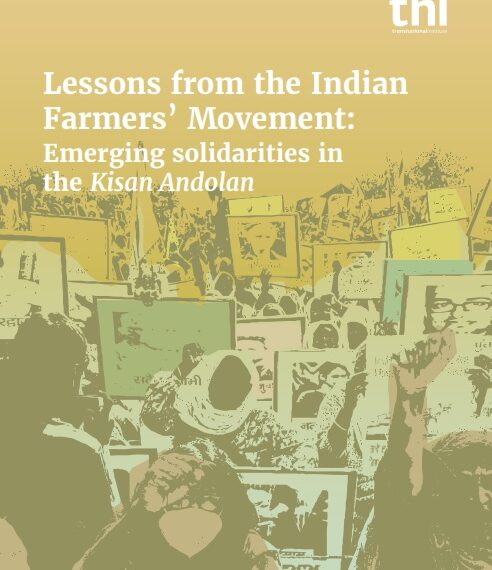Lessons from the Indian Farmers’ Movement
Lessons from the Indian Farmers’ Movement
Emerging solidarities in the Kisan Andolan
The Indian farmer’s movement that was able to successfully pressurize the Government to withdraw anti-farmer laws provides lessons for social movements engaged in wider struggles for social justice. This issue brief explores the frameworks and processes of alliance formation that contributed to the remarkable success of the Kisan Andolan.
Download
Introduction
Large protests by Indian farmers in 2020 and 2021 marked an important political moment for social movements in the country. The immediate trigger was the hurried passage of three ‘farm laws’ by the Union government in September 2020. Their far-reaching implications, coupled with the lack of wider discussion or consultation, provoked a strong response from farmers’ unions and rural movements across the country. When protesting farmers were prevented from entering New Delhi, the national capital, in
November 2020, they established camps at the capital’s borders – at Singhu, Tikri and Ghazipur – for over a year. This sustained mobilisation ultimately forced the government to repeal the three laws in November 2021. By then, the Kisan Andolan (farmers agitation) had evolved into a wider movement demanding decisive state action to address India’s systemic agrarian crisis and protect rural livelihoods.
Alongside well-organised protests on the ground, the Kisan Andolan was able to effectively shape broader narratives around the movement. It responded to widespread disinformation in mainstream media outlets that were sympathetic to the government by building an active and engaged social media presence. Participants provided regular updates from the protest sites to urban audiences. This included sections of the large Indian diaspora and international supporters who organised solidarity protests around the world. The mobilisation was also extensively documented by supporters and allies. Prominent examples include a biweekly newspaper, Trolley Times, published online and in print in multiple languages, and Karti Dharti, a fortnightly publication by women volunteers.
The farmers’ protests were a crucial victory for social movements in India, and came as the government was using the pretext of the COVID-19 pandemic to push through a far-reaching liberalisation of the economy. The repeal of the laws also represented a significant capitulation by an authoritarian regime that has otherwise sought to crack down on public opposition to its majoritarian nationalist and neoliberal policies. The Kisan Andolan has thus demonstrated real possibilities for confronting the government’s now familiar playbook of discrediting social movements, censoring dissent, and direct repression. The broad-based solidarities — among rural producers and spanning the rural-urban spectrum — that began to emerge over the more than year-long protests generate new expectations for wider political struggles.
This note explores the frameworks and processes of alliance formation that contributed to the remarkable success of the Kisan Andolan. To be sure, the movement is grounded and embedded in the Indian context. But as progressive social movements around the world confront oppression, austerity, militarism, and the prospect of a new global food price crisis, there is much to be learned from the political dynamics of this victory.




